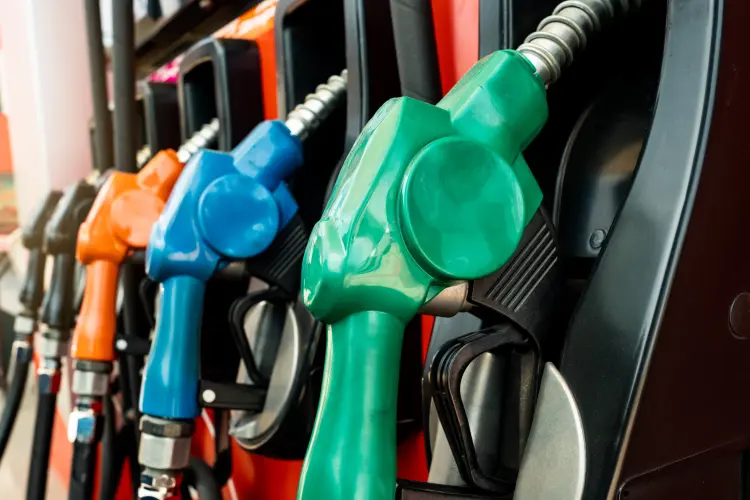Understanding Gas Grades: What’s The Difference And Which Should You Use?
Octane Explained
5,923Not all gasoline is created equal. In the United States, pump nozzles are labeled with different octane ratings and fuel blends—each designed for specific engine needs and performance goals. Picking the right grade can help your engine run smoothly, maximize fuel efficiency, and avoid costly knock or damage. In this guide, we’ll break down:
- What “octane” really means
- Standard gasoline grades (87, 89, 91–93 AKI)
- Ethanol blends (E10, E15, E85)
- Diesel vs. gasoline
- How to choose the proper grade for your vehicle

1. Octane Ratings: The Basics
Octane rating measures a fuel’s resistance to “knocking” or “pinging” during combustion.
- Higher AKI → greater resistance to pre-ignition under high pressure/temperature
- Lower AKI → more affordable, but risk of knock in high-compression engines
2. Pump Grades You’ll Find
| Grade | Typical AKI | Who It’s For |
|---|---|---|
| Regular | 87 | Most everyday passenger cars |
| Midgrade | 89 | Some turbocharged or lightly tuned engines |
| Premium | 91–93 | Performance cars, high-compression engines |
- 87 (Regular) The most common, lowest-cost option. Ideal for engines designed around that octane level.
- 89 (Midgrade) A step up in knock resistance; sometimes recommended if you live at high altitude or experience occasional pinging.
- 91–93 (Premium) Required by many European imports, turbocharged vehicles, and sports cars. Offers optimal performance and efficiency in those engines.
3. Ethanol Blends Explained
Ethanol, a renewable alcohol-based fuel, is blended into most U.S. gasoline. Common blends include:
- E10 (10% ethanol) Standard in nearly all stations. Slightly lower energy content than pure gas, but emissions benefits and higher octane help prevent knock.
- E15 (15% ethanol) Approved for newer vehicles (model year 2001+); can reduce fuel economy ~1–2% but raises octane by 1–2 points.
- E85 (up to 85% ethanol) For flex-fuel vehicles only. High octane (~100+ AKI) but significantly lower mpg; popular in some performance and alternative-fuel fleets.
4. Diesel vs. Gasoline Pumps
Diesel is entirely different: it ignites by compression rather than spark, has no AKI rating, and provides more energy per gallon. Never put gasoline in a diesel engine (or vice versa)—you’ll face expensive repairs.
5. How to Choose the Right Grade
- Check your owner’s manual. Manufacturers specify the minimum octane for your engine.
- Don’t overspend on premium if you don’t need it. Using 91+ AKI in an engine tuned for 87 won’t boost mileage or power—in fact, you may lose a fraction of efficiency.
- Listen for knock. If you hear pinging under load (especially uphill or towing), try a higher grade.
- Consider conditions. Hot climates, high altitude, or heavy towing can increase the risk of knock—midgrade or premium may pay off.
- Know your blend. If you have a flex-fuel vehicle, filling with E85 gives you the highest octane but expect ~25–30% lower range.
6. Common Myths and Tips
- Myth: Premium “cleans” your engine better. Fact: Detergent additives matter more than octane. Look for Top Tier™ brands to ensure quality detergents.
- Myth: Midgrade always buys better performance than regular. Fact: Only if your engine is pinging on 87; otherwise, you won’t notice a difference.
- Tip: Keep receipts or fill-up app logs if you’re testing different grades—track mpg to see what works best for you.
Conclusion
Fuel choice is a balance of cost, performance, season (fuel blends are different in the summer vs. winter), and engine health. Stick to your manufacturer’s recommendation, avoid over-grading, and be mindful of ethanol blends and local conditions. By understanding octane and the varieties at the pump, you’ll keep your engine happy and make every dollar at the gas station count.
TL;DR: Choosing the right fuel grade isn’t just about price—it impacts engine performance, efficiency, and longevity. In this guide, we’ll demystify octane ratings, explain regular, midgrade, and premium fuels, explore common ethanol blends like E10 and E85, and give you clear tips for picking the perfect pump option for your vehicle.
— Robert Vaughn
